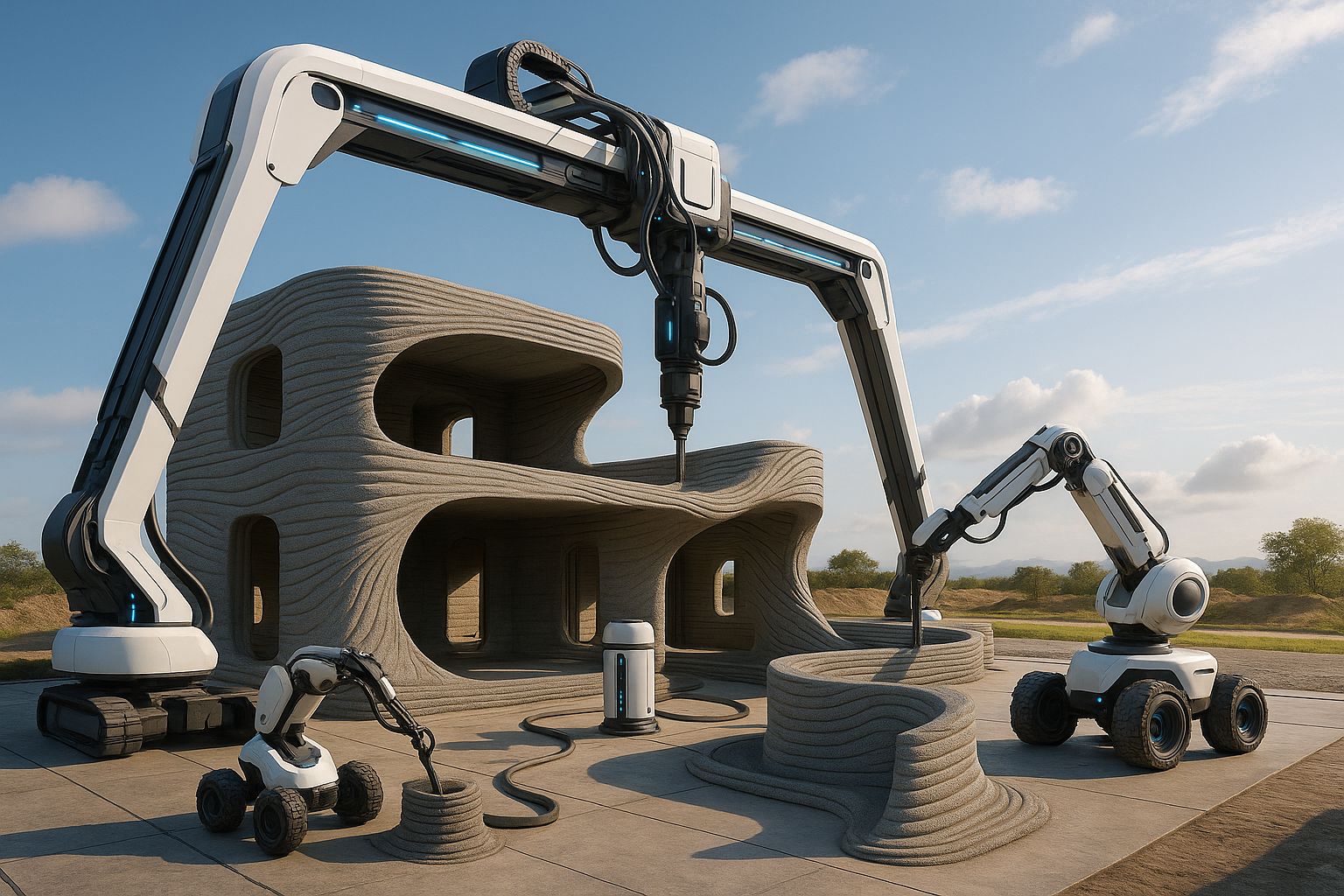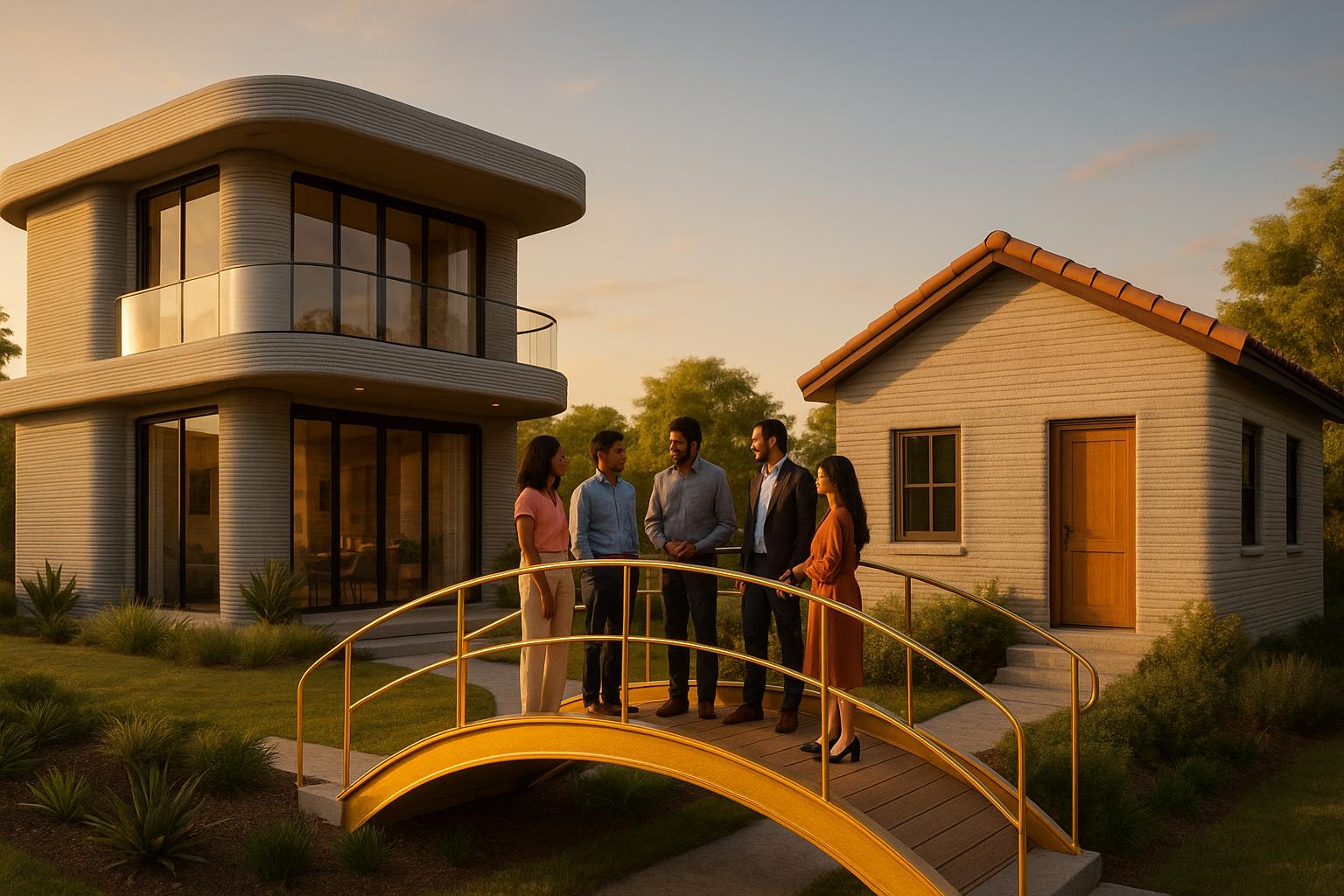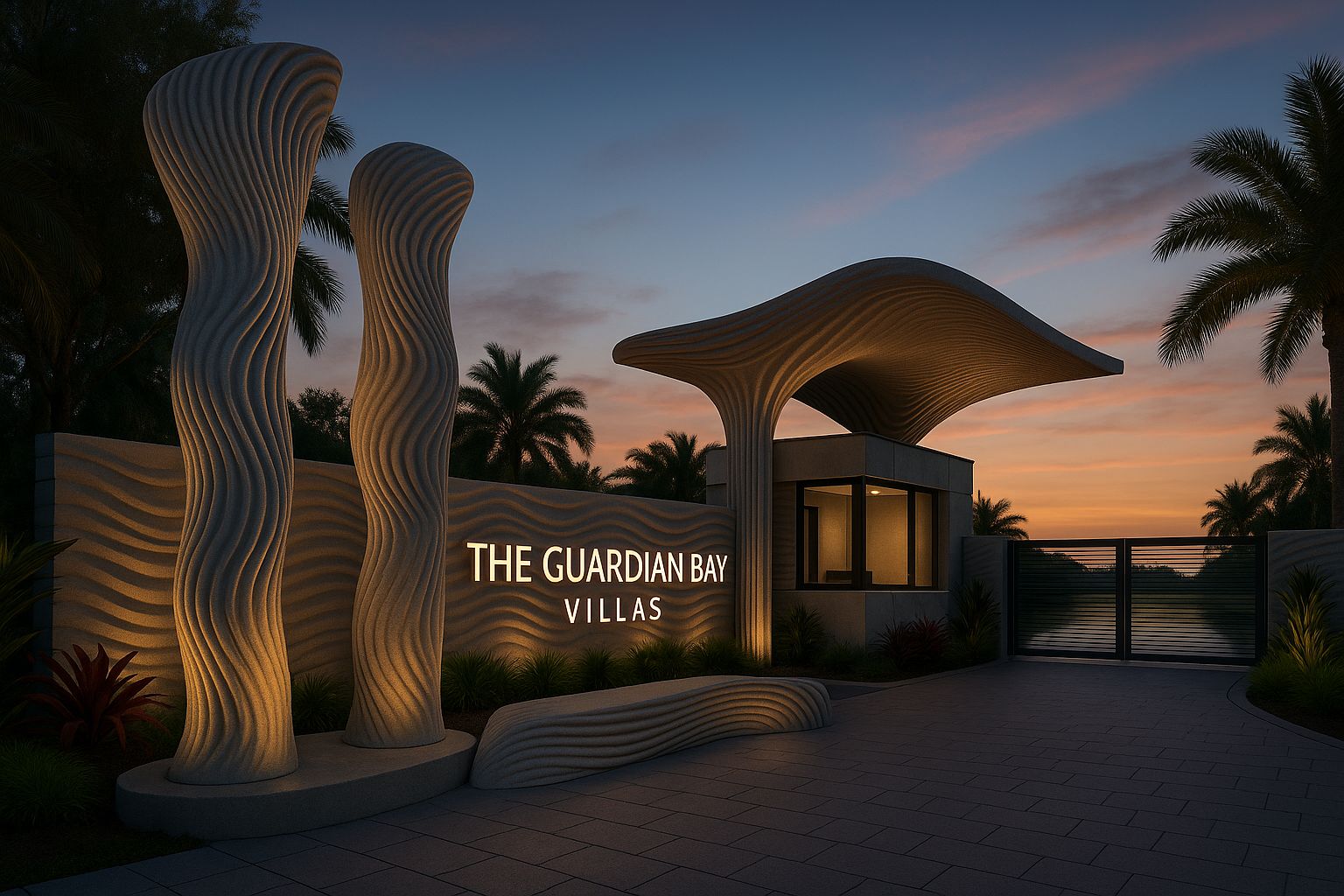Why One-Size Won’t Fit All in 3DCP Projects
Multi-printer strategies in 3DCP ensure speed, precision, flexibility, and innovation for modern construction.

Why One-Size Won’t Fit All in 3DCP Projects
As I connect with 3DCP developers around the world, I’m constantly hearing about breakthrough printers that outpace yesterday’s state-of-the-art—despite the industry still being in its infancy. This rapid evolution means relying on a single 3D concrete printer risks bottlenecks in scale, detail, and schedule.
Balancing Scale & Resolution
Large-Format Machines (3–6 m print widths) excel at raising walls, roofs, and foundations quickly—but struggle with tight curves and thin architectural accents.
High-Resolution Units (0.3–1 m widths) deliver crisp wave-textured panels, sculptural benches, and sensor-embedded housings, yet would crawl through full-scale shells.
Material & Mix Optimization
- Coarse-aggregate, high-flow mixes power structural pours without jamming large nozzles.
- Fine-grain, specialty mixes with color or rapid-set admixtures glide through smaller heads for detailed work.
Flexible Workflows & Parallel Production
Deploy containerized “pod” printers on-site for shells, alongside mobile shop units for bespoke elements. Villa shells rise while pool-house canopies, fire-pit surrounds, and pier railings print in tandem—compressing timelines and maintaining quality.
Innovation & Inevitable Obsolescence
Every few years, today’s flagship gantries give way to multi-axis robotic arms and autonomous crawler systems. Early-generation printers risk obsolescence—but that churn drives down prices: as advanced capabilities emerge, unit costs fall. By choosing modular, upgradeable platforms and leasing smaller rigs for element fabrication, you capture new performance without locking capital into outdated gear.
Bottom Line
A multi-printer strategy is no longer a luxury—it’s essential. By matching machine size, material mix, and location to each component—from vast villa shells to hand-scale wave panels—you achieve both speed and craftsmanship. And by planning for the hardware turnover inherent in a burgeoning field, you stay ahead of the curve while benefiting from the cost reductions that come with technological maturation.
Da Vinci Form is excited to test the latest 3DCP technologies with its flagship development, ensuring our projects remain at the cutting edge of innovation.

About DAVINCI FORM
Design-driven innovation for modern living—where architecture meets purpose.
.svg)

